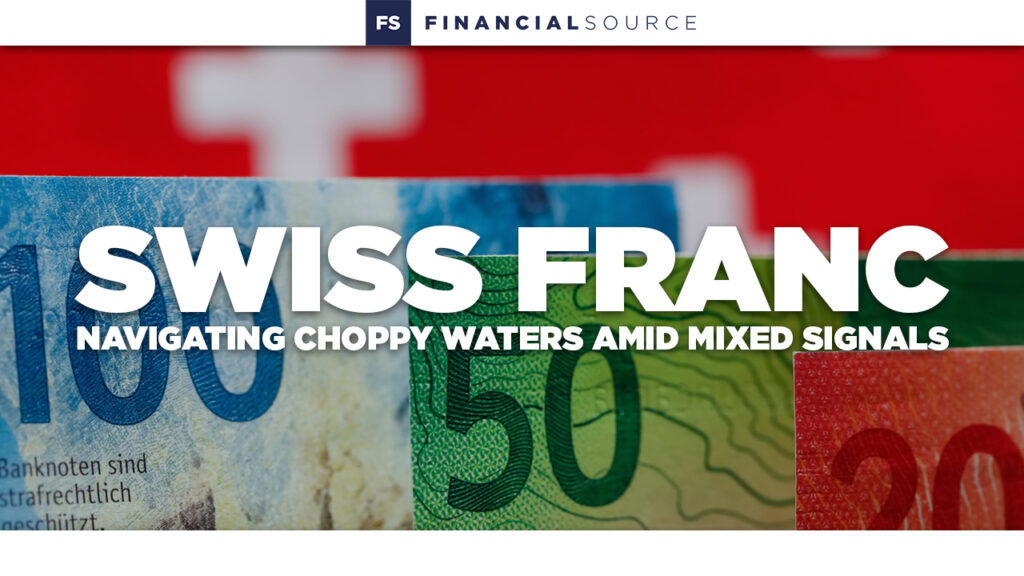Swiss Franc: Navigating Choppy Waters Amid Mixed Signals

The Swiss franc is currently navigating through a sea of mixed signals, making it a challenging environment for traders. Recent economic data out of Switzerland adds complexity to the situation, as the country’s annual inflation rate decelerated to 0.8% in September 2024, down from 1.1% in August. This marks the lowest inflation level since September 2021 and is the first time the rate has dipped below 1% in over a year. The slowdown in inflation was largely driven by ongoing deflationary pressures in key sectors like transport, which saw a decline of 2.3%, household goods and services (-3.5%), and clothing and footwear (-1.3%). Additionally, monthly CPI fell by 0.3%, against market expectations of a 0.1% drop, highlighting a broader trend of weakening price pressures in the Swiss economy.
On the surface, this weak inflation data would typically set the stage for a more dovish monetary policy from the Swiss National Bank (SNB), potentially signaling a bearish outlook for the Swiss franc. In fact, with inflation coming in below the SNB’s target, there is an increased likelihood of the central bank either maintaining or even loosening its policy stance, which could involve keeping interest rates low or hinting at further rate cuts. The SNB has also indicated in the past that negative interest rates are not entirely off the table if economic conditions warrant them. This would generally lead to a weakening of the franc as investors seek higher returns elsewhere.
However, the market picture is complicated by ongoing geopolitical risks, particularly the escalating tensions in the Middle East between Israel and Iran. These geopolitical uncertainties have triggered safe-haven flows into assets like the Swiss franc and yen, offsetting any downward pressure that weak inflation data would typically exert. This divergence in market behavior creates a challenging environment for traders. Normally, a dip in inflation to this extent would weaken the franc, as lower inflation typically means a more accommodative central bank policy. However, the geopolitical risks are overshadowing the economic fundamentals, driving demand for the franc despite the softer inflation figures.
The market’s choppy nature reflects this tug-of-war between economic fundamentals and geopolitical concerns. On one hand, the low inflation rate signals potential economic slowdown, dovish policy action, and a weaker franc. On the other hand, geopolitical tensions are enhancing the franc’s status as a safe-haven asset, leading to its strengthening. Traders are therefore faced with a dilemma: Do they trade based on the inflation data and potential monetary policy changes, or do they respond to the immediate geopolitical risks dominating market sentiment?
In times like this, risk management becomes crucial. The conflicting signals make shorting the franc a risky endeavor. While the economic data suggests a bearish outlook, the safe-haven demand driven by geopolitical risks could cause sudden and unpredictable spikes in the franc’s value. It’s essential for traders to closely monitor both economic indicators, such as further inflation releases and SNB policy announcements, as well as geopolitical developments. Until the market gains more clarity on these fronts, it might be wise to wait on the sidelines rather than make aggressive moves. A clearer trend will likely emerge as the geopolitical situation unfolds and the SNB provides more guidance on its policy direction in response to the weakening inflation environment.